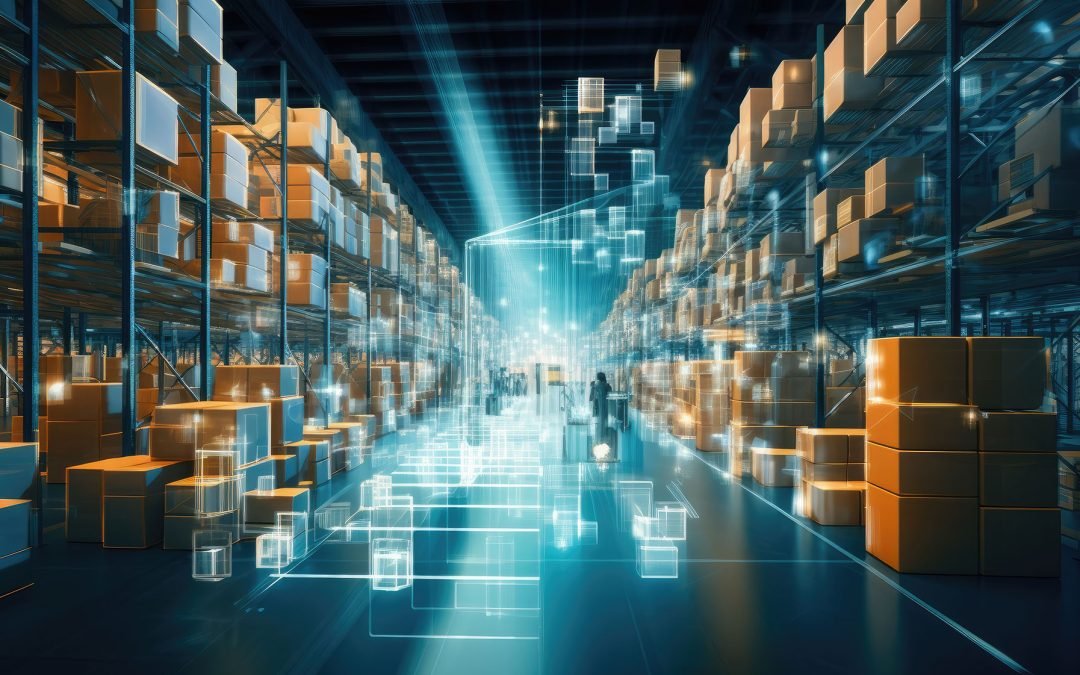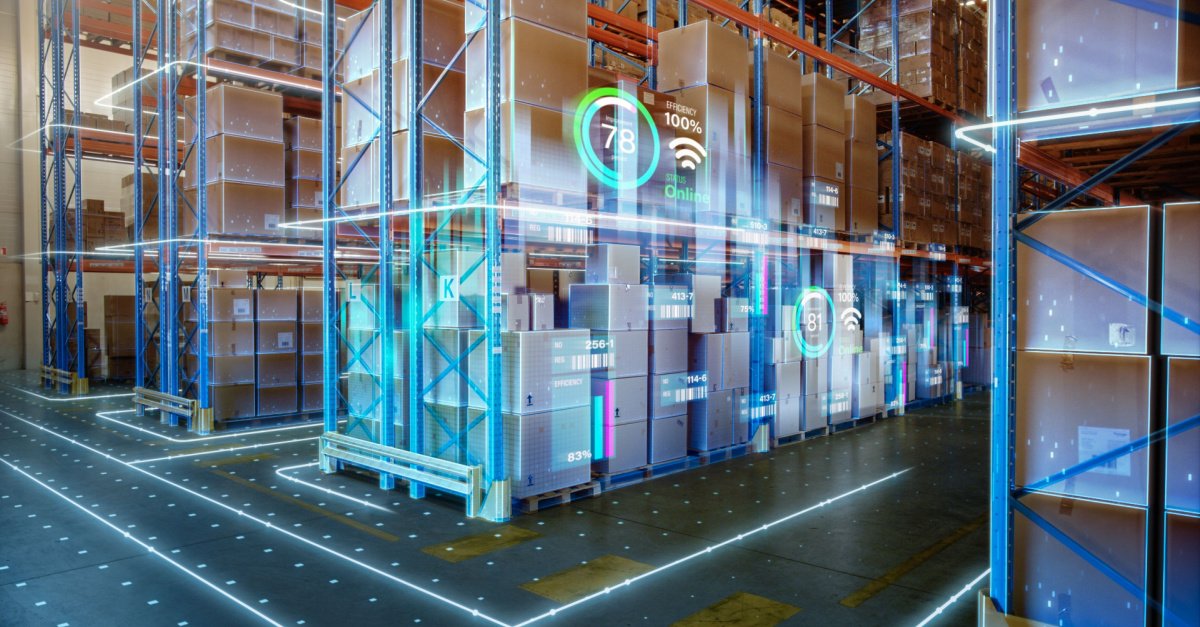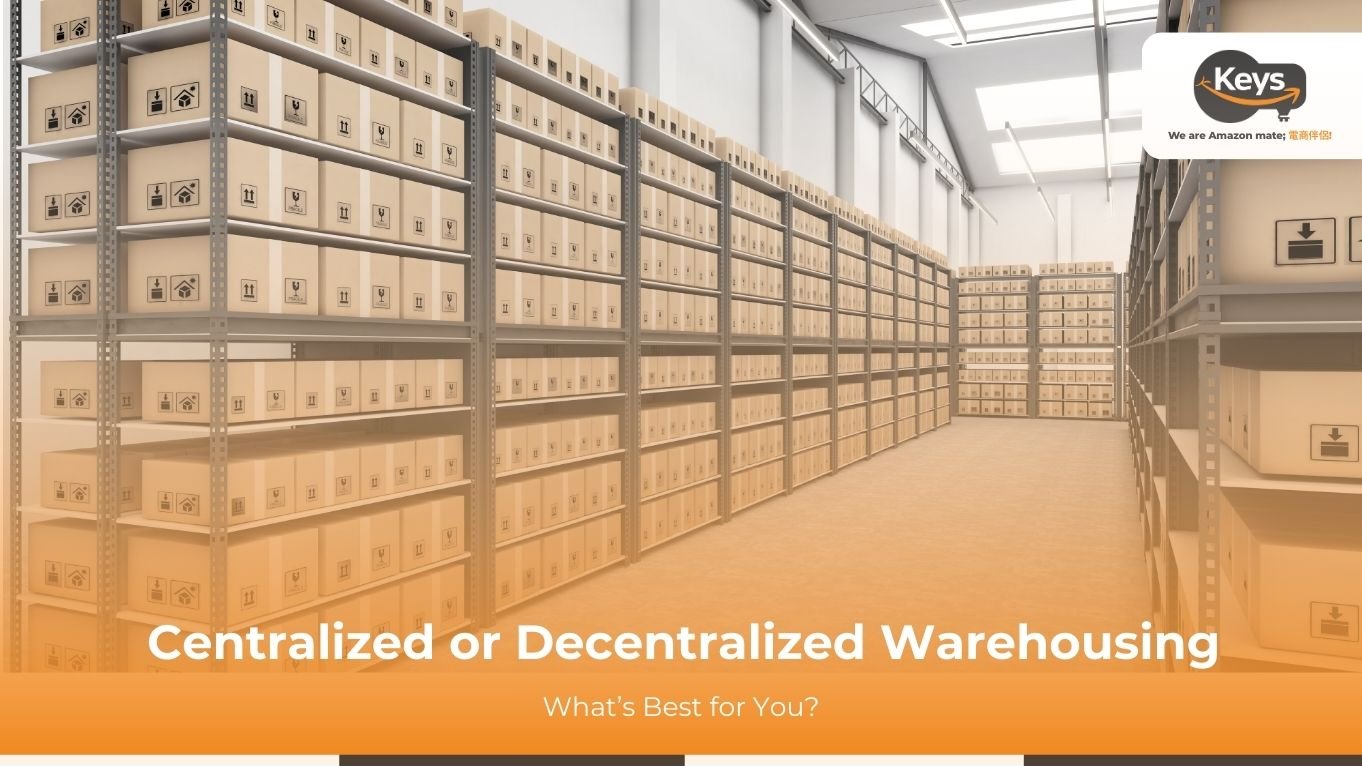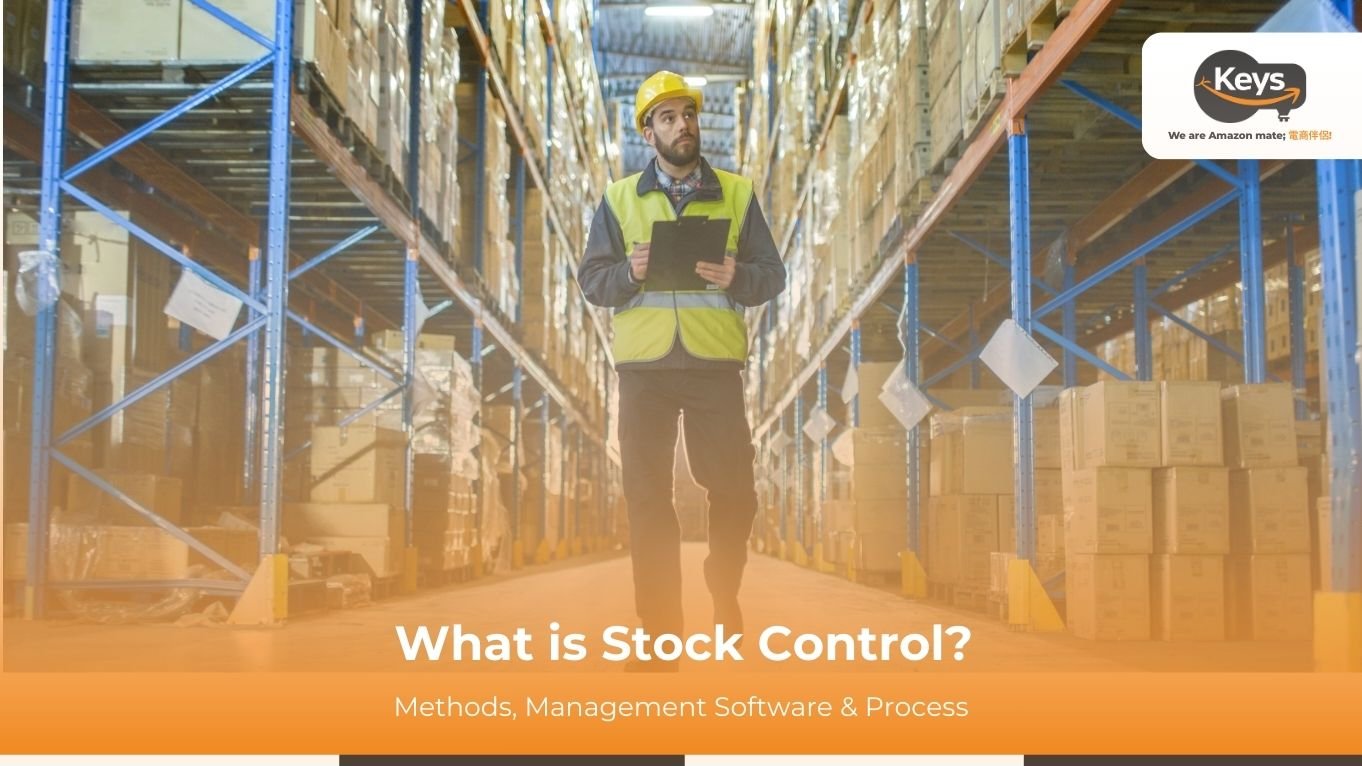As supply chains grow more complex, the digital warehouse emerges as a game-changing solution for modern logistics. By integrating cutting-edge technologies like AI, IoT, and automation, digital warehousing transforms traditional operations into intelligent, data-driven ecosystems. This evolution enhances accuracy, speed, and scalability – critical for staying competitive. Understanding the digital warehouse is key to future-proofing your logistics strategy.
What is Digital Warehousing?
Digital warehousing integrates advanced technologies like WMS, IoT, AI, and robotics to automate and enhance warehouse operations. It replaces traditional manual methods with a data-driven, connected environment focused on real-time visibility and intelligent management.
Key features include automated data capture, real-time inventory tracking, and automated material handling. This transforms the warehouse into a dynamic, efficient, and accurate logistics hub within the supply chain. The goal is a facility that operates with high precision and responsiveness, minimizing errors and maximizing throughput through automation and data insights.

Digital Warehouse in Action
In a digital warehouse workflow, arriving goods with RFID/barcodes are auto-scanned and verified against ASNs by the WMS, which instantly updates inventory; AI vision systems might check for damage. WMS calculates optimal storage locations, directing AGVs or AMRs to transport goods via optimized routes. When electronic orders arrive, WMS efficiently orchestrates picking, potentially using pick-to-light, voice direction, AR overlay glasses, or deploying AMRs for goods-to-person retrieval.
Picked items move via automated conveyors/robots to packing stations where systems assist with packaging and labeling. Throughout, real-time tracking provides managers complete visibility via cloud-based dashboards. Finally, continuous AI/ML analysis identifies bottlenecks, predicts equipment maintenance needs, and drives ongoing workflow optimization.
Benefits of Digital Warehousing
The adoption of digital warehousing principles and technologies yields a multitude of significant benefits that directly impact operational performance, cost-effectiveness, and overall supply chain resilience. These advantages stem from the core capabilities of automation, real-time data visibility, and intelligent process optimization.
Operational Efficiency
One of the most immediate and impactful benefits is a dramatic improvement in operational efficiency. Automation of repetitive and labor-intensive tasks, such as material transport, sorting, picking, and packing, significantly reduces the time required to process goods. AGVs and AMRs operate continuously without fatigue, while automated systems minimize travel time for human workers. Optimized workflows directed by intelligent WMS reduce idle time and ensure resources are allocated effectively.
Real-time data capture eliminates manual data entry delays and errors. This collective streamlining leads to higher throughput, faster order fulfillment cycles, reduced labor costs per unit handled, and an overall leaner, more productive operation capable of handling higher volumes without proportional increases in resources.

Inventory Accuracy and Visibility
Digital warehousing revolutionizes inventory management by providing unprecedented levels of accuracy and real-time visibility. Traditional methods involving manual counts and periodic updates are prone to errors and lag. In contrast, technologies like RFID, advanced barcode scanning, IoT sensors, and integrated WMS enable continuous, automated tracking of every item from receiving to shipping. This means managers have an exact, up-to-the-minute picture of stock levels, locations, and status (e.g., available, allocated, in-transit).
This eliminates discrepancies, drastically reduces instances of stockouts or overstocking, minimizes time spent searching for misplaced items, and improves inventory turnover. Accurate visibility supports better forecasting, demand planning, and efficient use of storage space, ultimately reducing holding costs and preventing lost sales due to unavailable stock.
Scalability and Flexibility
A key strategic advantage offered by digital warehousing is enhanced scalability and flexibility. The modular nature of many automation technologies (like AMRs) allows businesses to scale their operations up or down more easily in response to fluctuating demand, seasonality, or business growth, without the significant capital investment and disruption associated with traditional expansion. Automated systems can often handle increased volumes by operating longer hours or by adding more robotic units relatively quickly.
Furthermore, the data-driven nature of a digital warehouse allows for greater adaptability. Operations can be reconfigured more easily, new workflows implemented faster, and the system can adapt to changes in product mix or customer requirements with less friction. This agility is crucial in today’s volatile market, enabling businesses to respond quickly to opportunities and challenges.
The Future of Digital Warehousing
The future of digital warehousing involves hyper-connected ecosystems, seamlessly integrating with suppliers, carriers, and customers via shared data platforms. AI and ML will advance beyond optimization to predictive and prescriptive analytics, enabling autonomous decision-making and anticipating disruptions. The ‘lights-out’ warehouse concept, operating with minimal human intervention, will become increasingly viable. Digital Twins will enable sophisticated simulations for planning and optimization before physical implementation.
Enhanced AI-robot synergy will yield more adaptable robots capable of complex tasks and intuitive human collaboration. Sustainability will drive optimization in energy use and waste reduction through digital tools. Edge computing integration will facilitate faster, localized data processing and decision-making. Ultimately, warehouses will evolve into highly intelligent, adaptive, resilient, and autonomous logistics nodes.

Top Digital Warehousing Solutions
The transformation into a digital warehouse is powered by a diverse array of interconnected technologies. Each solution addresses specific challenges and contributes to the overall goal of enhanced efficiency, visibility, and automation. Understanding these key components is crucial for designing and implementing an effective digital strategy.
Radio Frequency Identification (RFID)
RFID technology utilizes radio waves to automatically identify and track tags attached to objects. In a warehouse context, RFID tags applied to pallets, cases, or individual items allow for rapid, non-line-of-sight identification. RFID readers installed at dock doors, conveyor belts, or on forklifts can capture data from multiple tags simultaneously, automating inventory tracking during receiving, putaway, movement, and shipping. This significantly speeds up processes compared to manual barcode scanning, improves data accuracy, and provides real-time visibility into inventory location and movement without manual intervention.
Drones
Unmanned Aerial Vehicles (UAVs), or drones, are finding increasing application in large warehouses. Equipped with high-resolution cameras, barcode scanners, or RFID readers, drones can perform rapid inventory cycle counts by flying through aisles and scanning tags or labels, often during off-peak hours. This is significantly faster and safer than manual counting, especially for high-racked storage. Drones can also be used for security surveillance, monitoring warehouse conditions, and inspecting infrastructure, providing valuable aerial perspectives and data capture capabilities.

Warehouse Management Systems (WMS)
The WMS is the central nervous system of the digital warehouse. This sophisticated software platform manages, controls, and optimizes day-to-day operations. It directs workflows for receiving, putaway, inventory management, picking, packing, and shipping. A modern WMS integrates with other technologies (like RFID, AGVs, IoT sensors), utilizes algorithms for optimizing storage locations and picking routes, manages labor resources, provides real-time inventory visibility, and generates performance analytics. It acts as the command center, orchestrating the various automated and manual processes for maximum efficiency.
Internet of Things (IoT)
IoT involves a network of physical objects – sensors, devices, equipment – embedded with connectivity, allowing them to collect and exchange data. In warehousing, IoT sensors monitor various environmental conditions (temperature, humidity), track the location and status of assets (forklifts, AGVs), monitor equipment health for predictive maintenance, and provide real-time data on inventory levels or movement. This constant stream of data feeds into the WMS and analytics platforms, enabling better control, proactive management, and deeper operational insights.
Augmented Reality (AR)
AR technology overlays digital information onto a user’s view of the real world, typically via smart glasses or handheld devices. In warehousing, AR applications can significantly enhance manual tasks like picking. Pickers wearing AR glasses can see visual cues indicating the exact location of items, optimal picking paths, quantities required, and confirmation scans, all hands-free. AR can also be used for training new employees, providing interactive instructions for maintenance tasks, and improving quality control checks.

Automated Guided Vehicles (AGVs)
AGVs are mobile robots designed to transport materials automatically within a facility. They typically follow predefined paths guided by wires, magnetic strips, lasers, or vision systems. AGVs are commonly used for tasks like transporting pallets from receiving to storage, moving goods between different zones, or taking finished orders to shipping docks. They automate routine material handling, reduce reliance on manual forklifts, improve safety, and ensure consistent material flow.
Cloud Computing
Cloud computing provides the scalable infrastructure needed to store, process, and access the vast amounts of data generated by a digital warehouse. WMS, analytics platforms, and IoT data are often hosted in the cloud, allowing for accessibility from anywhere, easier integration between different systems and locations, and flexible scalability. Cloud platforms facilitate collaboration across the supply chain and enable the deployment of sophisticated AI/ML models that require significant computing power.

Automation and Robotics
This is a broad category encompassing various technologies beyond AGVs. It includes fixed automation like high-speed sorters, automated storage and retrieval systems (AS/RS) that automatically store and retrieve goods from dense racking structures, robotic arms for picking individual items (piece picking) or palletizing, and collaborative robots (‘cobots’) designed to work safely alongside humans. These technologies automate physically demanding, repetitive, or precision-requiring tasks, boosting speed, accuracy, and throughput while reducing labor dependency.
Digital Twins
A digital twin is a dynamic virtual representation of a physical warehouse, its processes, and its assets. It is created using real-time data collected from IoT sensors, WMS, and other systems. This virtual replica allows managers to monitor operations remotely, simulate the impact of potential changes (e.g., new layouts, different automation strategies) without disrupting physical operations, test optimization algorithms, and predict future performance or potential bottlenecks. It’s a powerful tool for planning, optimization, and risk management.
Artificial Intelligence (AI) and Machine Learning (ML)
AI and ML algorithms analyze the vast datasets generated within the digital warehouse to uncover patterns, make predictions, and drive intelligent automation. Applications include demand forecasting, optimizing inventory placement (slotting), dynamic task allocation for workers and robots, predictive maintenance for equipment, optimizing picking routes in real-time, identifying anomalies, and improving overall decision-making. AI acts as the ‘brain’ that leverages data to continuously learn and improve warehouse performance.
AI and ML optimize warehouse performance by analyzing data for demand forecasting, task allocation, and predictive maintenance (Source: Internet)
The rise of the digital warehouse marks a turning point in supply chain modernization—enabling real-time visibility, automation, and smarter decision-making. As global logistics grows more complex, businesses that adopt digital infrastructure gain the agility to scale and adapt with confidence. Investing in digital transformation isn’t just strategic – it’s essential. A well-executed digital warehouse can unlock long-term efficiency and growth.
Looking to digitize your logistics operations? Keys Logistics combines advanced warehouse technology with expert fulfillment solutions to help you build a future-ready supply chain. Contact us today to get started.












 Tiếng Việt
Tiếng Việt 中文 (中国)
中文 (中国)

